
Background information
Playing "The Outer Worlds 2": smaller than "Starfield", but with more humour
by Philipp Rüegg

The graphics are glitching, the browser’s crashing – and I’m wondering what the hell I’m doing in this pixelated 3D world from the 90s. In my eyes, the event in Decentraland has little to do with fashion.
I’m standing in the front row of Dolce & Gabbana’s runway show. My neighbour’s fluorescent wings flutter around my ears. Other front row companions have bright pink tube TVs instead of heads and are wearing clothes that look like melted rainbows.
It’s 24 March, and I’m at the opening catwalk of the first Metaverse Fashion Week. Over the span of four days, fashion shows, panel discussions and shop openings are to take place here, freely accessible to the whole world. Among the participants are big names like Tommy Hilfiger and Paco Rabanne; fast-fashion brands Mango and Forever 21; and pioneers of digital-only textile craftsmanship, Auroboros and The Fabricant.
Metaverse Fashion Week (MVFW) takes place in the browser-based 3D world of Decentraland, which looks like a video game from the late 90s. The huffing and puffing Macbook Air forces me to set the graphics to low. The result is an even more rudimentary-looking virtual world.
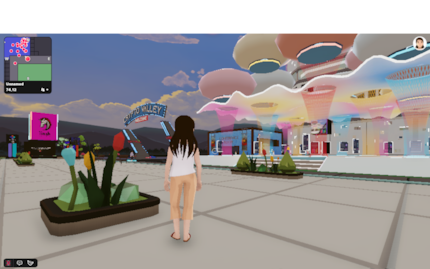
Meta Fashion Week advertises accessibility – but without a high-performance graphics and memory card, the trip there feels nerve-wracking above all. As I attempt to log in as a guest (you need a crypto wallet to get a real account), my two-year-old laptop starts making gurgling noises that I’ve never heard it make before. I try to give the frozen loading display a jolt by pressing the refresh button. No success. Next, I restart my browser. And when that fails, I reboot my whole laptop. Rinse, repeat.
After an hour of trying and failing, it starts to feel like Groundhog Day. But I’m finally in. My colleague Laura throws in the towel. I guess her eleven-year-old Macbook has been denied admission into Decentraland. Admittedly, I’m also slowly running out of steam. Alright, time to create my avatar. With no crypto-cash to spend, I don’t have much to choose from. In my free outfit, I accept my fate of immediately outing myself as a complete noob to Decentraland regulars.
By the way, Brandy Melville-like conditions prevail in this land. The rule is one size fits all – as long as you’re a size XS or S. You can’t change the shape of your avatar’s body, so there are only thin bodies in Decentraland. So much for the limitless and inclusive metaverse.
I start by beaming my avatar to an exhibition of designer Paco Rabanne and artist Victor Vasarely. There, I navigate my way through a convoluted museum setting, lack of virtual coordination and all. The graphics glitch, the browser crashes, and the field-of-view control via touchpad is so cumbersome that I desperately wish I could simply click through an Instagram picture spread with decent resolution and no metaverse fuss.
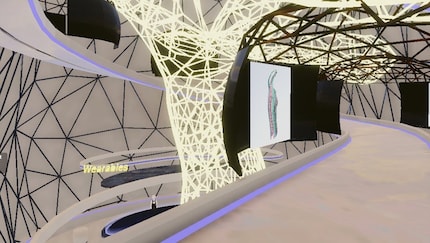
Next, I travel to Crypto Valley, where the bill says the opening talk will take place. I search in vain for a hint as to where exactly this panel is being held. Just as I’m feeling more like a boomer than ever at 27 years of age, cries for help from fellow sufferers pop up in the public chat window, all of them equally disoriented. «Where’s the panel?» they ask in unison. «On the rooftop terrace,» someone replies. «Where’s the rooftop terrace?» I follow up. Hospitable Metaversians direct me to the fourth floor, which is supposed to be accessible by elevator.
It takes me half an hour to find said lift and another 15 minutes to understand how to operate it. I see other what must be other Decentraland newcomers get in and out of the elevator without ever leaving the ground floor. Finally, at the top floor, I find out that my efforts were in vain: the panel never started in the first place, much to the confusion of everyone present.
At this point, I’m emotionally done with the Metaverse Fashion Week and just want to clock off work. But because part of me still wonders how a fashion show is run here, I gather the last of my strength and drag my avatar to the Dolce & Gabbana show. With just about 280 viewers, it looks pretty deserted. Later on, I read that Decentraland sends avatars to different dimensions to avoid overcrowding the virtual space. So the crowd might have been much bigger in reality. But the fact remains that you just can’t get a great vibe going in a half-empty stadium.
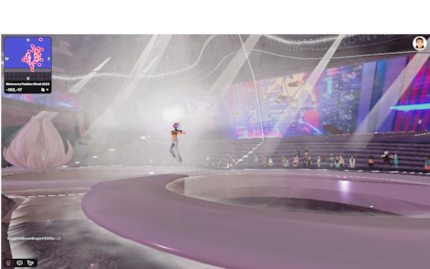
Amid a pixelated light show extravaganza, the Italian fashion house finally sends its feline avatars down the runway to showcase its collection of wearable NFTs (non-fungible tokens, sort of like digital proofs of ownership). I feel like I’m trapped in a retro video-game version of the TV show «The Masked Singer». It’s hard to believe that these amateurish-looking outfits were created by a billion-dollar designer house. At least the fiasco only lasts eight minutes.

MVFW was hyped as an immersive experience that would make fashion accessible to all. But for those of us interested in fashion who don’t yet lead a second, digital life, the event offers just about nothing. I prefer to look at The Fabricant’s cyber-couture on the traditional web rather than in a graphically painful hodgepodge of a fashion show in a metaverse that doesn’t allow for detail. Besides, you can find just about any real-life runway show online these days in an HD video. So, when brands try to convince me that the metaverse shatters the barriers to high fashion, I call shameless marketing lie.

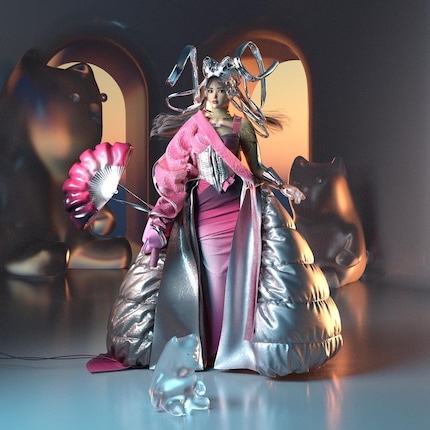
Back in 2021, zeitgeisty luxury brand Gucci sold its Dionysus bag for about 4,000 francs (more than it costs in real life!) on the gaming platform Roblox. And RTFKT made about million francs in turnover in just seven minutes by selling a pair of NFT sneakers. It comes as no surprise, then, that this is creating a massive case of FOMO in the industry. In this case, the fear of missing out on the ultimate crypto gold rush.
Traditional high-end fashion houses with little NFT experience rushing into the digital spheres seems doomed to fail. When Italian company Etro announced a promising «Liquid Paisley» pattern on Instagram – pretty animation and all – ahead of its Decentraland show, I was definitely interested. When I see the final result in the metaverse, I can’t help but laugh. This supposedly dynamic material of the future could hardly look more static.
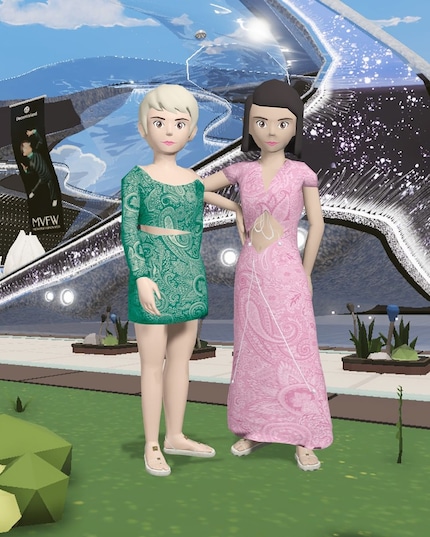
A look at the comments column – where people are mentioning Habbo Hotel and Playmobil vibes – raises the question of whether Etro’s attempt to enter the world of NFTs might not even harm its reputation. «In the future, I’ll think twice about buying anything from you. Show some style,» writes a disappointed customer. «Please don’t ... This is ridiculous. A brand so full of textures and colours just looks dead in the metaverse,» reads another of many critical comments.
Sure, the metaverse is still in its infancy and will become massively more powerful in the next few years, just like hardware. After all, 30 years ago, when the World Wide Web was still in its prepubescent phase, few people could have imagined the sheer dimension the Internet would have in 2022. But until the metaverse has matured, I see no reason to subject myself to this patchwork of pixels – let alone spend money on it.
Has endless love for shoulder pads, Stratocasters and sashimi, but a limited tolerance for bad impressions of her Eastern Swiss dialect.
Interesting facts about products, behind-the-scenes looks at manufacturers and deep-dives on interesting people.
Show all
Background information
by Philipp Rüegg

Background information
by Debora Pape

Background information
by Martin Jungfer